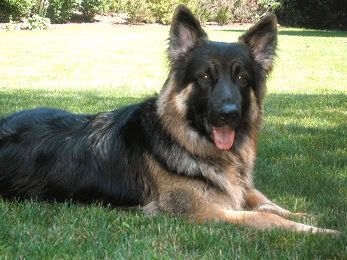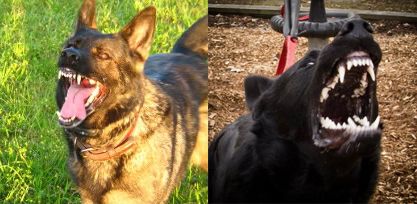I have a 3.5 year old spooky GSD. I am not a trainer, nor a behaviorist, but these are some of the things that worked for me. Please keep in mind that my dog was/is a stable spook, by which I mean that her fears were consistent, as were her reactions- she ran away from everything, including her own shadow (not a joke, unfortunately). If the dog is showing active aggression, or is incapable of forming a bond with one person, then I can't offer any suggestions, out of my area of experience. My whole goal with my dog was to prevent fear aggression.
As others have mentioned, the bond the dog has with it's handler is necessary. With my dog, I did not allow any one else to handle her; I wanted her to learn that I was the safe place, and that I was the leader and was strong enough to keep the scary things away. I proceeded no further until I had her absolute trust, until I could handle all of her body without her becoming fearful, grooming, picking her up, rattling pots, pans, plastic bags, and shaking my hands over her head (this was a major trigger). The dog was off limits to my son and husband. One fear at a time. If she could not trust me completely in the house, how can she trust me to keep her safe in the world? I looked for the moment when she looked at me when something scared her in the house. Then I knew it was time for the yard....Then the street...so on.
If the dog has any prey drive at all, in the house (fearful dogs won't show drive when they think their life is in danger), DEVELOP it! Prey drive builds resilience to stress, and with nervy dogs, a kind of tunnel vision is produced (if the drive is high enough) that enables them to get through more stress than without it. I lucked out with my dog. Insane high prey drive, extreme ball focus. Not a nerve in her pretty head. Luv her tho...
I never, ever put my dog in a position to make her own decisions. Ever. Look at me. I will take care of it. I trained this with the ball, and MILDLY distracting areas first to condition a response. Fear=look at the boss. I never punished her for running away from something. Once she showed active aggression, in a very mild way. I showed her the exact same picture, while giving her a new behavior to offer i.e., instead of barking and making the bad person run away (this reinforces the aggression and can get out of control quick), look to the handler, the bad person walks away, you get the ball. I repeated this, no joke, 50 times, at least. I still show her the picture, when we walk, occasionally. If people walked up to the dog, or something happened in the environment that I couldn't control, I taught her to sit, and I put my leg in front of her, or placed myself between her and the scary thing. The main thing to remember is to know the dog's limits! Do not expect a dog who has a baseline fear of people to get along with strangers, ever. Miracles happen, but those are the exceptions, not the rule, and usually with dogs that missed out socialization periods, with decent nerves, not spooky dogs. Accept the successes, and never forget, once a spook, always a spook. This might sound harsh, but the worse thing that can happen is the handler sees the dog doing better, and thinks the dog is actually better, and then expects a level beyond what the dog is capable of, and blows the trust they have formed. This is a handler failure, not dog failure.
Understand that this took years of work, with much patience, and a true desire for my dog to be the best dog that she could be, not the idealized version, or what I wanted her to be. It is a long process. I would highly recommend a behaviorist (a good one, with reasonable and achievable goals for your sister and her dog), as Connie stated. It is very tough to do it on your own, and the frustration can be great, as can the disappointment at a setback. And, if you don't know what you are doing, you can make the problems much worse, without realizing. Spooky dogs are not normal dogs, and they should be treated with a sensitivity to their special needs, by a handler willing to commit to a program. I learned a lot from my dog, she still teaches me something everyday.
Much more than this; things like critical distances, counter conditioning, desensitization, learning theory. This is where a behaviorist saves a lot of time for someone who has a like, a real life.
This last note is without sarcasm and without irony. My spooky dog and I went for a night walk the other night, and she was calm, aware yet not afraid of her surroundings (familiar). Her mood was excited, and very mild anxiety, but with an absolute faith that there was nothing that I couldn't handle, so she was just a dog, on a walk with her handler, enjoying the evening air. That is the result of almost 3 years of training. Kind of sad, in a way, but the faith and trust that dog has in me is humbling, and a great gift.
This is what worked for me.
Relation is reciprocity. How we are educated by children, by animals!-Martin Buber Previous Topic
Previous Topic Index
Index Next Topic
Next Topic













 Top
Top




